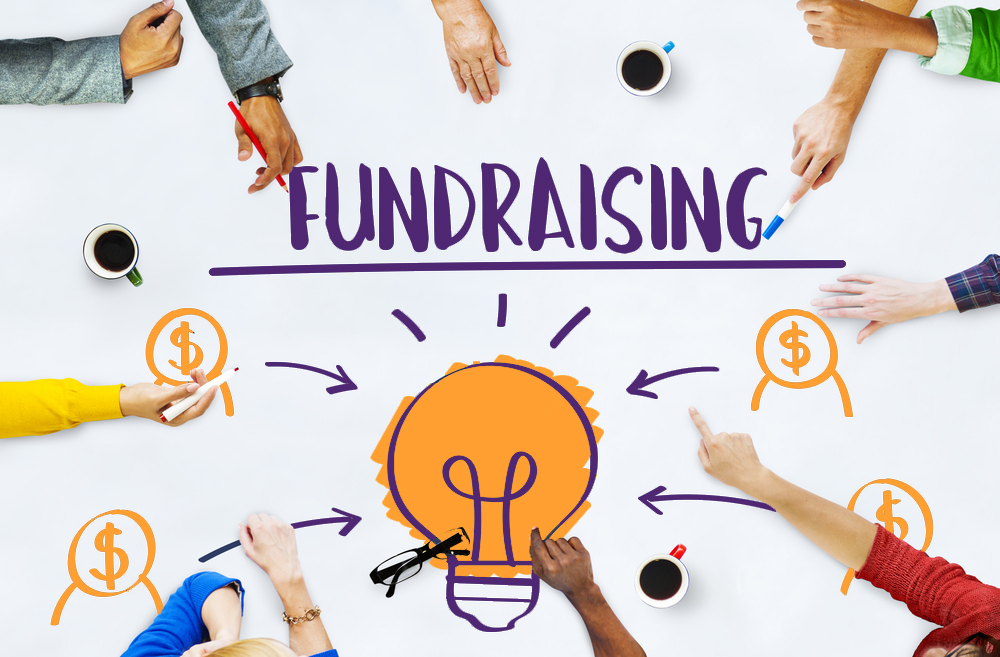Top Nonprofit Fundraising Ideas: Innovative Techniques to Increase Even More Funds
Top Nonprofit Fundraising Ideas: Innovative Techniques to Increase Even More Funds
Blog Article
The Role of Neighborhood Engagement in Nonprofit Fundraising: Structure Lasting Relationships for Sustainable Support
Neighborhood interaction is progressively recognized as a vital part of successful not-for-profit fundraising. The techniques and approaches employed to engage neighborhoods differ commonly, elevating important inquiries regarding efficiency and influence.
Understanding Neighborhood Interaction
Area involvement is an important element of successful nonprofit fundraising efforts. It refers to the methods and activities that organizations utilize to attach with their neighborhood neighborhoods, promoting connections that are equally valuable. Understanding area involvement entails identifying its complex nature, which consists of participation, cooperation, and outreach. Nonprofits need to determine essential stakeholders-- such as area members, neighborhood services, and other organizations-- to develop efficient engagement approaches.
Reliable community engagement is asserted on energetic listening and responsiveness to the requirements and interests of the neighborhood. This process entails getting responses, comprehending community characteristics, and guaranteeing that the company's objective straightens with local top priorities. Engaging the area can take numerous forms, including public conferences, volunteer opportunities, and partnership campaigns, each created to encourage involvement and financial investment in the organization's objectives.
Additionally, area engagement must be come close to as a continuous discussion rather than a single effort. By cultivating an inclusive setting where neighborhood voices are listened to and valued, nonprofits can build a solid foundation for future fundraising undertakings. Eventually, a deep understanding of community involvement empowers organizations to produce genuine links that enhance their general performance and sustainability.
Advantages of Solid Relationships
Strong connections created via community interaction yield countless advantages for not-for-profit fundraising efforts. First and primary, these connections foster depend on and trustworthiness, essential components in encouraging contributors to contribute. When prospective advocates see a not-for-profit proactively entailed in their community, they are more probable to count on its mission and impact.

Furthermore, these relationships help with efficient communication. Nonprofits can utilize their connections to share tales of effect, updates, and requires, making sure that supporters stay informed and engaged. This open line of interaction not just enhances bonds yet likewise urges word-of-mouth promo, broadening the not-for-profit's reach.
Lastly, solid community ties can bring in brand-new partners and sponsors. Organizations and people are a lot more inclined to align with organizations that show significant area participation, offering additional resources and support that can significantly boost fundraising capacities. Hence, growing robust relationships with area involvement is essential to a nonprofit's lasting fundraising success.
Techniques for Efficient Engagement
Just how can nonprofits properly involve their communities to improve fundraising efforts? Normal updates, engaging web content, and calls-to-action can galvanize community passion and engagement.
2nd, organizing neighborhood events, such as workshops, volunteer opportunities, or fundraising drives, assists in in person communication, permitting nonprofits to showcase their effect and initiatives. These events not just increase funds however additionally grow connections and permit neighborhood participants to engage directly with the reason.
Third, carrying out tailored interaction approaches can enhance engagement. Tailoring messages to certain donor sections based on rate of interests and past payments fosters a sense of belonging and financial investment in the company's goal.
Last but not least, developing partnerships with regional organizations and area leaders can magnify outreach initiatives. Collective campaigns can enhance exposure and reliability, demonstrating a collective commitment to the area's wellness. By integrating these approaches, nonprofits can construct long-term connections that improve fundraising efforts and drive sustainable support.
Measuring Interaction Success
While involving the neighborhood is essential for effective nonprofit fundraising, measuring the effectiveness of these involvement efforts is just as essential. Establishing clear metrics enables companies to examine exactly how well they are getting in touch with their target market and achieving their fundraising objectives. Key efficiency indicators (KPIs) such as donor retention rates, volunteer participation degrees, and involvement on social media platforms give concrete information for assessment.

Regularly evaluating these metrics enables companies to pivot their techniques when needed, making sure that community involvement remains straightened with their total objective. In addition, sharing these results with stakeholders fosters openness and develops trust fund, urging more area involvement. Eventually, a durable measurement structure not only educates future fundraising initiatives but also strengthens the connection between the nonprofit and its advocates, preparing for lasting success.
Situation Studies in Area Effect
Various instance studies highlight the extensive influence that neighborhood interaction can carry not-for-profit fundraising success. One noteworthy instance is the "Something Go Here to chew on" initiative, where a neighborhood food financial institution partnered with colleges and services to host area suppers. These events not only elevated funds but additionally promoted a sense of belonging among participants, dramatically raising benefactor retention rates.
An additional engaging instance is the "Environment-friendly Spaces Project," which involved local homeowners in the revitalization of urban parks. This effort not only amassed monetary assistance from regional businesses but likewise grew a volunteer base that added to continuous maintenance and programming. The sense of ownership and satisfaction among area participants equated into sustained payments.
In the realm of arts, the "Art for All" project effectively engaged local artists and customers to create joint art setups, resulting in increased presence and contributions check for a regional arts nonprofit.
These examples highlight that when nonprofits prioritize neighborhood involvement, they can develop lasting connections that boost fundraising initiatives, ensuring sustainable support and fostering a vivid area society. Such instances show that neighborhood involvement is not simply a technique but a vital pillar of not-for-profit success.
Final Thought
In verdict, neighborhood involvement is important to the success of nonprofit fundraising initiatives. By promoting solid connections with local stakeholders, companies improve count on and trustworthiness, resulting in boosted benefactor retention and loyalty. Implementing reliable interaction nonprofit agency techniques and gauging their effect guarantees that nonprofits can adjust and flourish. Ultimately, a durable structure of community support not just intensifies fundraising prospective however likewise cultivates a society of collaboration, essential for achieving lasting organizational goals and maintaining purposeful influence.
Nonprofits should identify key stakeholders-- such as community members, regional companies, and various other companies-- to produce effective involvement techniques.

In conclusion, community engagement is essential to the success of not-for-profit fundraising efforts.
Report this page